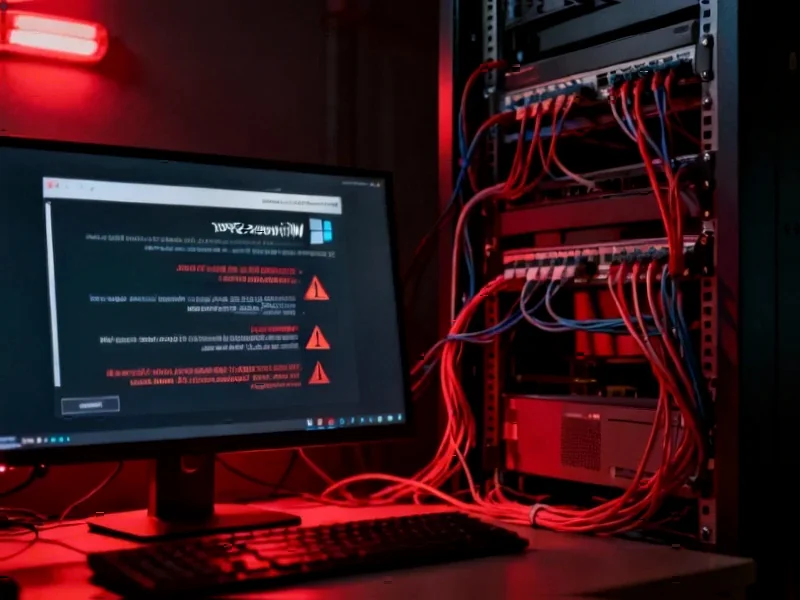According to Windows Report | Error-free Tech Life, Microsoft’s out-of-band update KB5070881, designed to address the critical WSUS vulnerability CVE-2025-59287 that was being actively exploited, has caused Hotpatch enrollment failures on some Windows Server 2025 systems. The company confirmed that a “very limited number” of Hotpatch-enrolled machines lost their enrollment after installing the emergency patch, which was briefly offered to all Windows Server 2025 machines regardless of Hotpatch status before Microsoft corrected the distribution. Affected systems will receive the October 24, 2025 Security Update KB5070893 instead, which allows them to remain on the Hotpatch update track for November and December updates. This incident comes as security researchers and the Netherlands National Cyber Security Centre confirmed the remote code execution bug was being exploited in the wild, with Shadowserver Foundation data showing over 2,600 WSUS servers remain exposed to the internet. This emergency patch scenario highlights deeper systemic issues in enterprise security management.
The Hotpatch Paradox
The fundamental tension Microsoft faces here represents what I call the “Hotpatch Paradox” – the conflict between the need for immediate security response and the promise of zero-downtime patching. Hotpatch technology was specifically designed to eliminate the very disruption that emergency patches create, yet here we see the emergency response mechanism itself breaking the continuity solution. This isn’t just a technical glitch; it’s a philosophical contradiction that exposes the limitations of current enterprise security models. When your safety net becomes part of the problem, you’re dealing with systemic architectural issues rather than simple implementation bugs.
Enterprise Risk Calculus Shift
This incident will force enterprise IT departments to fundamentally reconsider their risk assessment frameworks. The traditional calculation of “patch immediately versus wait for testing” becomes exponentially more complex when the patch itself can break critical functionality. We’re entering an era where the cure can be as dangerous as the disease, particularly for organizations running business-critical applications that cannot tolerate unexpected downtime. The Bleeping Computer coverage of active exploits creates additional pressure, forcing security teams into impossible choices between known vulnerabilities and unknown stability risks.
The Future of Enterprise Patching Architecture
Looking forward 12-24 months, this incident will accelerate three major trends in enterprise security. First, we’ll see increased adoption of containerized and microservices architectures that isolate patch impacts to specific components rather than entire systems. Second, AI-driven predictive patching will emerge, using machine learning to anticipate compatibility issues before deployment. Third, we’ll witness the rise of “patch rollback insurance” – automated systems that can instantly revert problematic updates while maintaining security posture through alternative controls. Microsoft and other enterprise vendors will be forced to develop more sophisticated dependency mapping and impact prediction tools that go far beyond current testing methodologies.
Broader Industry Implications
The implications extend far beyond Microsoft’s ecosystem. Every major enterprise software vendor watching this incident is reevaluating their own emergency patch procedures. We’re likely to see increased industry standardization around patch impact disclosure, with vendors providing detailed dependency maps and compatibility matrices before deployment. The cybersecurity insurance industry will also take note, potentially adjusting premiums based on an organization’s patch management sophistication and their ability to handle emergency updates without business disruption. This represents a maturation of enterprise security from reactive patching to proactive resilience engineering.
Long-Term Strategic Outlook
Five years from now, we’ll look back at incidents like this as the turning point where enterprise security shifted from vulnerability management to resilience architecture. The companies that thrive will be those that build systems capable of absorbing both security threats and security responses without breaking. Microsoft’s challenge isn’t just fixing this specific Hotpatch issue – it’s rearchitecting their entire security response framework to handle the inherent contradictions of modern enterprise computing. The organizations that survive the coming years won’t be those with perfect security, but those with the most resilient systems when security inevitably fails.




